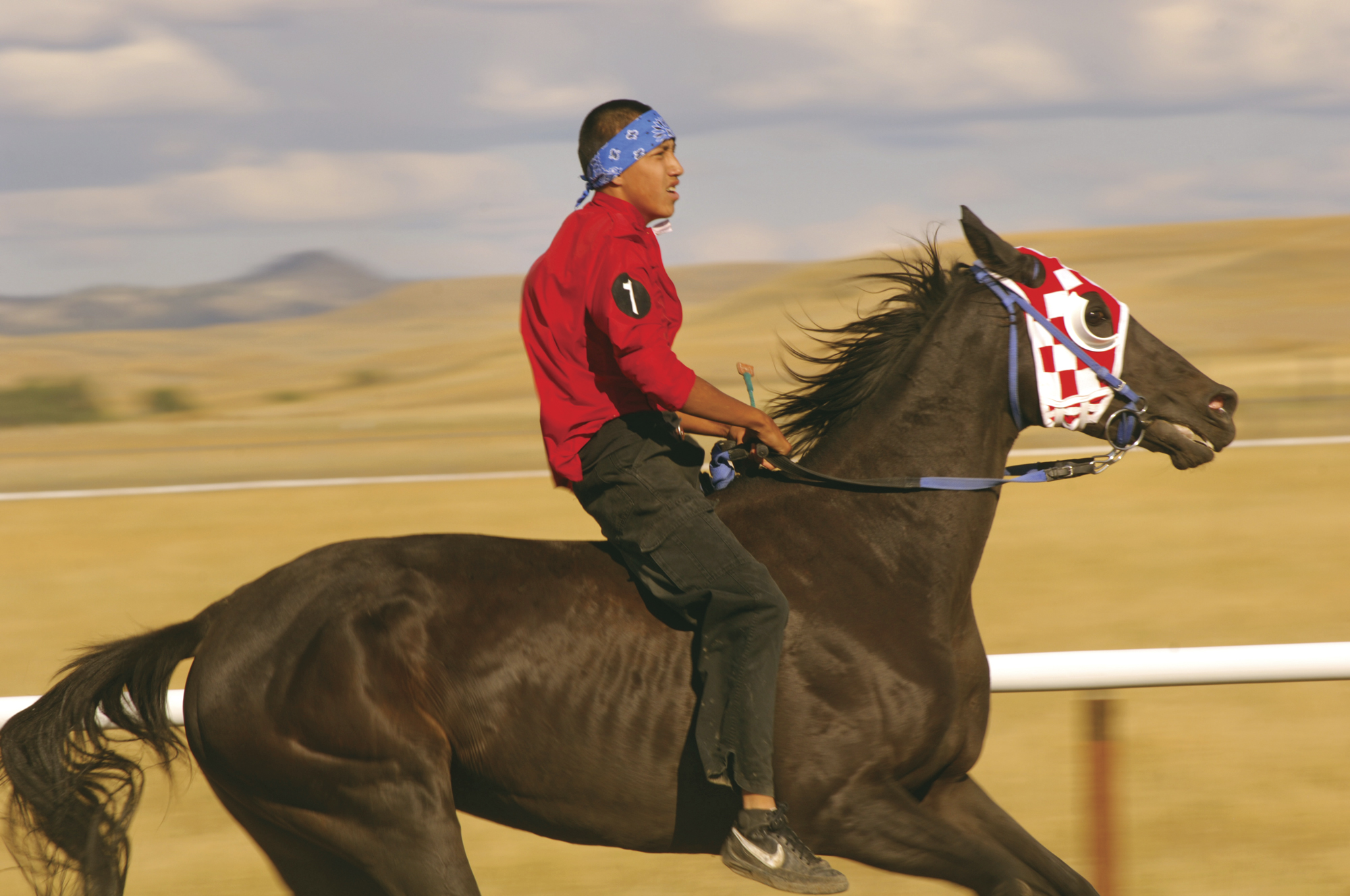
23 Jul In Search of Montana Horse Racing
HORSE RACING IS THE MOST ANCIENT of sports. The connection between human and horse endures, a partnership with nature to prevail over one’s rival. Sport of Kings, as the saying goes, Sport of Indians in Montana.
Today’s horse racing sustains the mystique — the tradition, the history, the notion of a winner and a loser determined by connection to the power and speed of a horse. The average citizen has heard of The Kentucky Derby, The Belmont and The Breeders’ Cup races, images that conjure high-stakes excitement and romantic notions of rising from nowhere to prevail.
In Montana the institution of horse racing returns each summer in Kentucky Derby fashion at Billings Metra, Great Falls and Miles City. Rocky Mountain winters quell the rhythm of a year-round racing season, so in Montana horse racing is a summer sport. If a lover of horse racing searches deep enough, however, another authentic racing culture perseveres.
In the High Plains states, the Crow Indians have reigned among the finest horse people. Mythically regarded for their fast horses and spiritual equine connections, I’ve come to appreciate that Crow Indians race the biggest-hearted horses in the state at their August powwow, and Crow Indians have big hearts themselves. Naturally, when an assignment to search for the contemporary status of Montana horse racing drifted my way I knew it had to include Crow racehorses. The Crow Fair, it seems, sports the oldest horse racing in Montana if not America.
All my life I have watched Indians ride colorful horses. As a youngster I had the good fortune to ride in harmony with Blackfeet horsemen of the Two Medicine/Badger country under the Front Range. I have had the good fortune to witness the Plains horseman’s style merge with American horse racing to produce timeless horse racing, bareback relay racing, racetrack racing, horses-everywhere-and-everything racing. Montana Indians engender a horse culture deluxe.
Yet, that horse culture is not so easy to find. I tapped the net for the Crow schedule. The only mention of Crow horse racing was the horse racing director’s name and phone number. I called, but there was no answer at 10 a.m., nor at 2 p.m. or 6 p.m., or whenever I called through the next few days the week before the Apsaalooka Fair. No answer and no message machine. Nothing in the Billings Gazette about Crow Fair horse racing, and only brief mention of the contemporaneous Yellowstone Downs meet at Metra Park.
Indians remain spontaneous, and beautifully so. Moccasin telegraph, I thought. If I could not find an electronic schedule, I would ask around. In Bozeman I knew where to find Crow Indians. I ran into Old Coyote at the Hot Springs. No worries. Her oral tradition declared horse racing was alive and well and upcoming at Crow Fair. The races were on for sure, she said. To find out exactly when, one simply had to arrive at the Little Horn around the third weekend in August, I was told.
Horse racing has long been at Crow Fair, and even longer, storytelling of the horses that raced hard. One must guess at the schedule and then travel down freeways and past refineries, between Crazy Woman and Absaroka Mountains through August rangeland, through horse country of old into ancient prairieland to find Crow racing. One must not be too sure of time and space and one must understand that there are no words for “Post Time” in Crow. Many languages course the air at Crow Fair. They speak Crow and they speak horse, yes they do, with some English here and there to accommodate those of light ancestry.
BEFORE ENTERING WHAT I REMEMBERED as the celebrated, ethereal and effervescent experience of horsemanship at Crow Fair, I planned to take in the Yellowstone Downs Metra Park racing. The Downs had squeaked out five weekends of racing, down from their 60-some days in the Montana horse racing heydays of the 1970s and early ‘80s.
By one o’clock Friday, the photographer and I talk our way onto the quasi-secure backside tucked under the soft Yellowstone rimrock. Races underway, we slip alongside anxious horses and their apprehensive horsemen as they clop across asphalt to the tightest, narrowest, darkest paddock in America, located under an empty concrete grandstand. Faces familiar to Montana horse racing flash far and near in the shadow play of dusty light and tiny saddles, most of the faces wrinkled and old. Diehards from the Montana thoroughbred tradition continue to find a way to make Big Sky horse racing happen. These days they race more paints and quarters than thoroughbreds. For some there is no other life than the racehorse life. Yellowstone Downs somehow still keeps Montana racing afloat for those in need, but the ranks are fading like the silks their jockeys sport.
As the state’s horse racing faded in the ‘80s due to the advent of video poker machine gambling, the Billings racetrack came to be used for auto racing. Scars of the auto racing conversion remain. A cyclone fence separates the horseplayers from the horses giving the racing a cagey feel. It really isn’t clear exactly who is being protected from whom. Where there isn’t cyclone fence, vertical walls of highway guardrail surround the track. Though the least aesthetic track in America, the horse racing is some of the most determined.
As is the case nationally, drugs have fueled the great tragedy of modern racing. At Metra Park, more than half of the horses in the program are listed as racing on medication, including the 2-year-olds. As we walk through the backside we can’t help but notice vet trucks prowling about, the veterinarian more a chemist than a physician these racetrack days, by my estimate, drawn from my own horse-vetting experience. Proud horsemen led their bridled horses to the skinny paddock under the grandstand. Eager jockeys legged up. Out to the track they pranced, through the post parade, into the machine, and off they ran as horses are apt to run, together in a herd.
If I were to bet on a bright future for pari-mutual horse racing in Montana, the return would have to be high. Each year the dates are fewer, the handle lower, the players harder-bitten and the horses more swollen-jointed. But my horse doctor life tells me wherever horses run, hope prevails and Montana is no exception. The director of racing and members of the commission have high hopes. Ryan Sherman, director of the Montana Board of Horse Racing says for 2009, “Racing in Montana looks good. We have restructured the funding and look forward to establishing a foundation that takes us well into the future.”
The Montana horse racing tradition dies hard. Jockeys and trainers persevere. Owners dress up and smile around. Horses continue to be saddled and races are run. Bets cashed. Horses continue to win and horses continue to lose. Drugs flow and bones break, but the new age of horse racing is rolling all that back. The next day, two horses went down after we left. Dreams come true and dreams shatter as horse racing dreams have through time. Money comes and goes; the only things that come and go faster are the horses.
WE SLIP OUT ACROSS THE RACETRACK through the barns. We roll south down I-94 over expansive swells and folds of prairie, sailing through ancient horse origins to Crow Fair, where a fresh perspective of Montana horse racing awaited us. I am not sure what year Billings horse racing began, but it was long after the horse racing of the Crow.
As we attempt to locate the elusive racetrack, horses and smiles and tipis and paint and pride and feathers escort us through Crow Agency. A different horse ideology drifts within Indian horse racing, an older culture, a culture endowed by animals, an attitude refusing to swap the animal out for the material. Indians are friends to their racehorses. The horses are their glory, treated as individuals with respect and dignity. The racing at Billings, while earnest, somehow seemed forced.
A cool breeze softens the atmosphere of Crow Fair. The sun shines, people relax and ride horses all about. Whinnies and nickers float along the blue water of the Little Horn. Groves of cottonwood-green shimmer the backdrop. Crow people appreciate horses like few others, a proud people drawn deeply to nature, horses taking care of their keepers.
Hank Real Bird once sang me the history of the Crow horses; he sang Crow horses out of the river from which they came, the Little Horn River. His clan is famous for horses. Real Birds are renowned worldwide for their horseback reenactment of the Custer Massacre.
Hank’s poetry sings out of how rightly his family and his tribe connect to horses, both the parade horses and their bucking horses; one line trained to carry their grandchildren back in time, the other bred and raised to throw the finest native horseman back to the earth upon which they once only walked. Crow Indians tap into opposing natures of horse. They nurture the tame, they entice the wild. Perhaps best of all, native horsemen nurture the run, bareback run at that, a harmonious run.
We found the best Montana horse racing not in the state’s biggest city at the state’s biggest racetrack, but in a prairie flat beyond the world’s largest tipi encampment on the Little Big Horn River, a place that has seen some Indians ride horses through time. The racetrack sits on the riverbottom where Sitting Bull once gathered the other largest known tipi encampment, the encampment that still echoes its defiance to Manifest Destiny. Even now, the drumming along this bend of the Little Horn remains the drumming of hooves across the prairie. The wailing is joyous, Crow Fair racing as noble and honorable as any horse racing in America.
Apsaalooka honor their horses, both the horses they race and buck and the horses they ride. All Crow horses are created equal whether they carry their children or their jockeys or their buckaroos, whether they win or whether they lose. At Crow Fair the horsemanship, like the prairie wind, is pure.
The remainder of America has a ways to come.
For those wanting to see what horse racing can be in Montana, look to the American Indian, travel through time itself to Crow Fair next August, and don’t forget to travel to Browning in July to see my friends the Blackfeet run their horses through Indians Days.
- Practice runs on the race track.
- Horse racing is hard to find in Montana these days, but summer weekends in Billings offer a range of races at Yellowstone Downs.
- Crow Indians are avid horse people and racing is part of their cultural heritage.



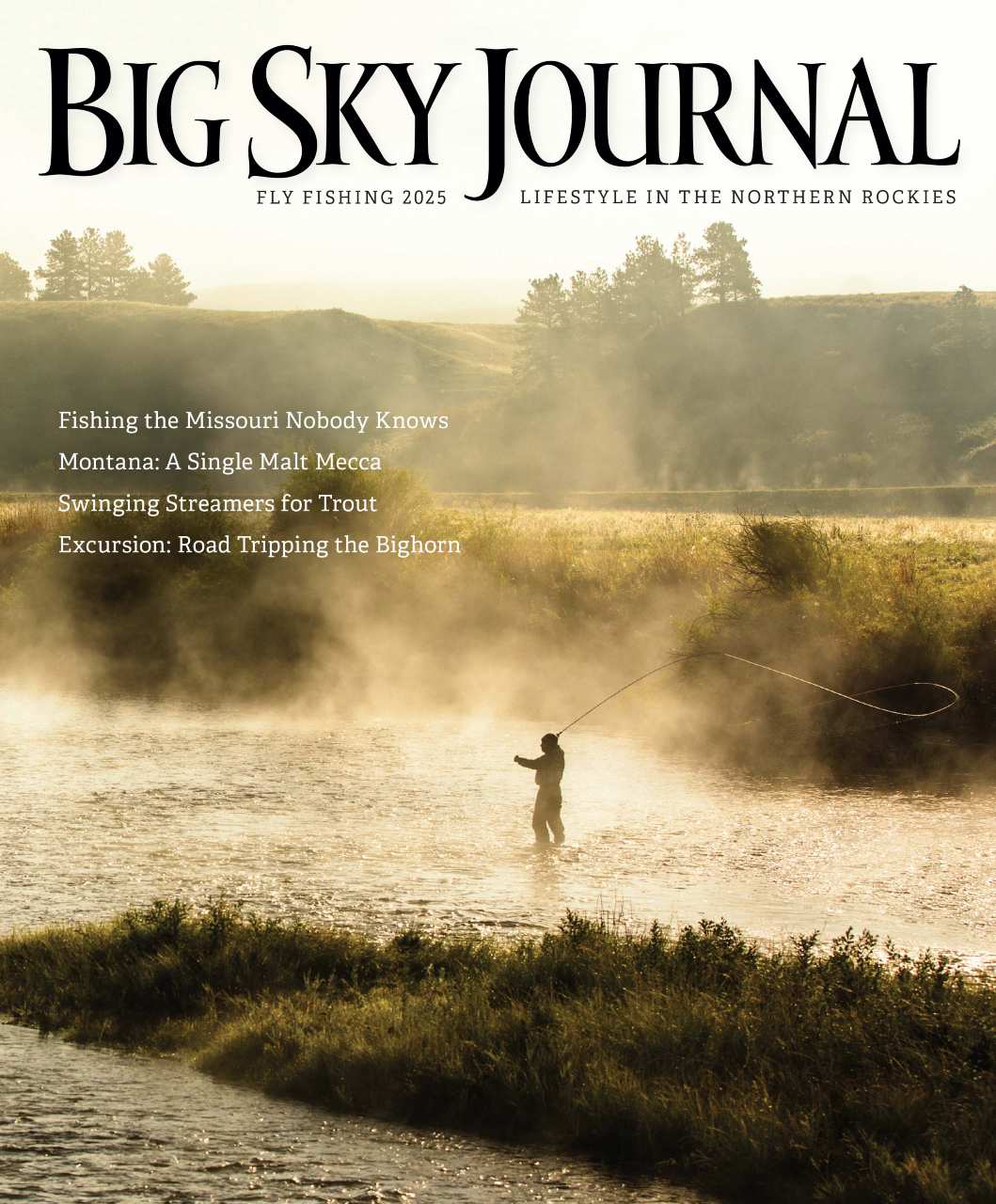
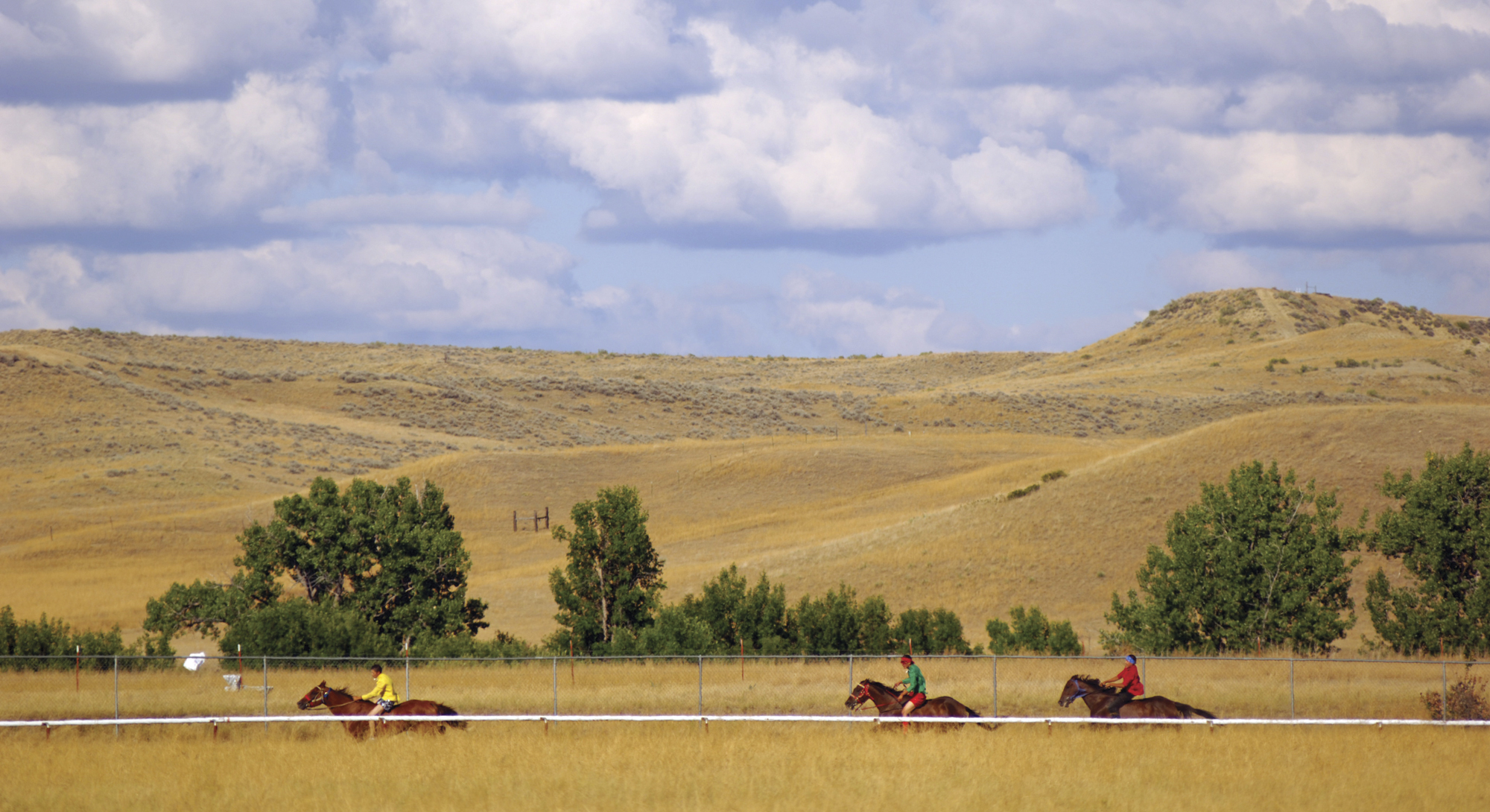
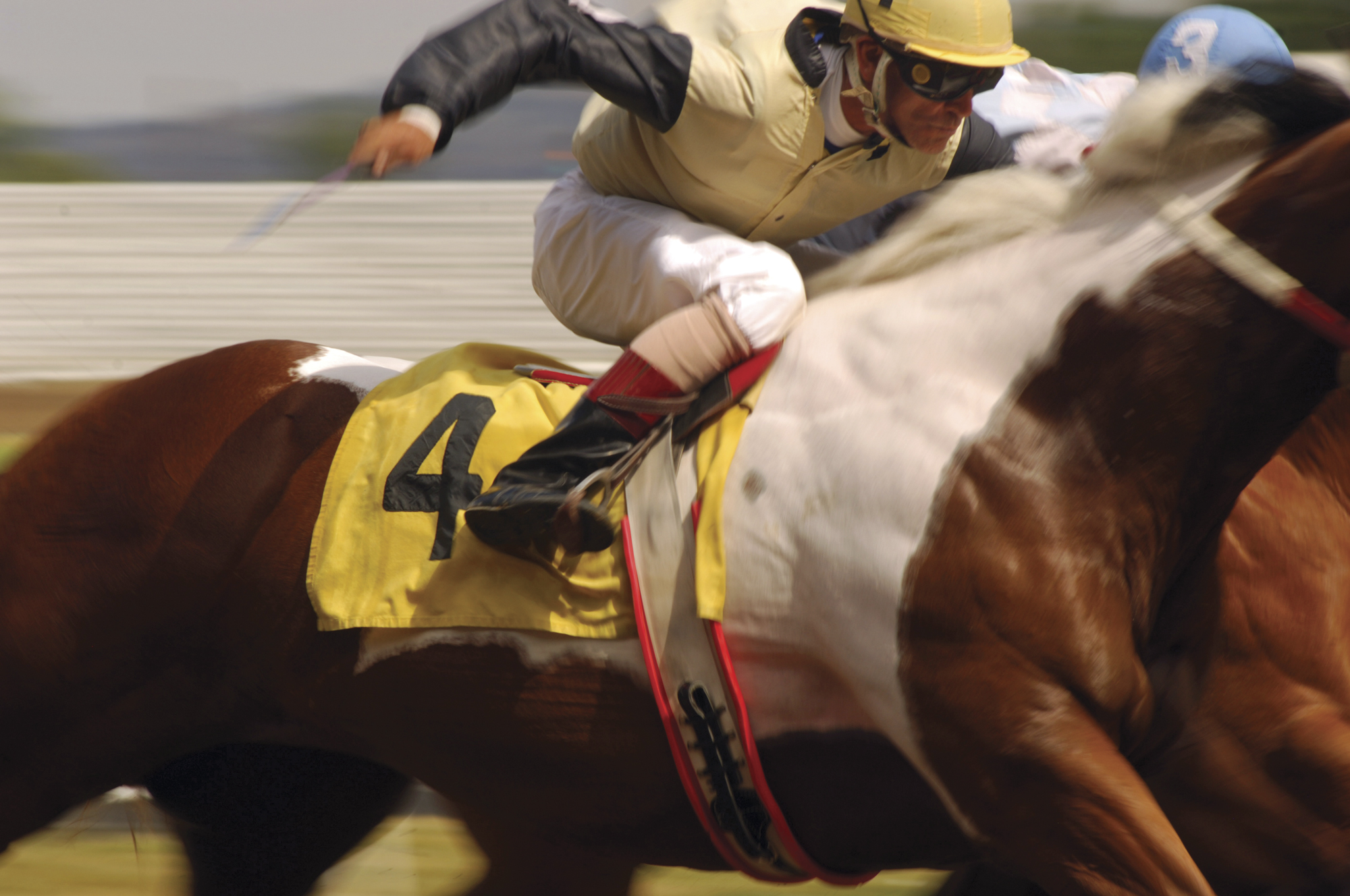
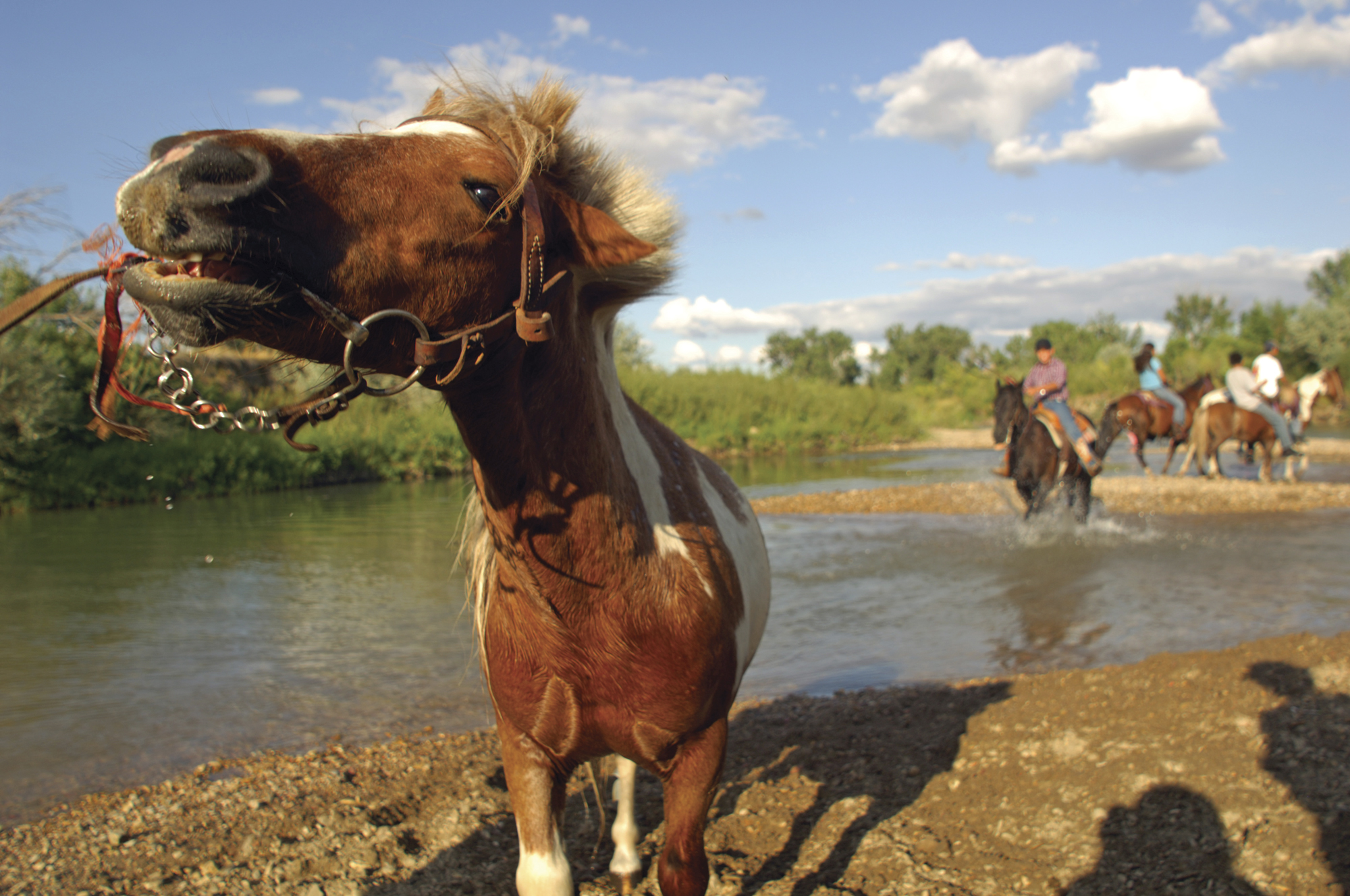
Ima Nottellinu
Posted at 17:45h, 06 AugustNo-oo, horse racing in Montana didn’t fade only bc of electronic machines…it faded bc the state insurance premiums got so high, & insurance requirements so restrictive that no one could afford it any more. Our Fair in Missoula stopped racing several years ago. Our Fair is essentially dead…no racing, the track torn apart & leveled, the 4-H & open class animals being squeezed out, the whole grounds remodeled to resemble an open air mall….It’s a mess & most assuredly NOT a great country Fair anymore, and the death of racing & the greed that caused it were major reasons why.
Jim Mandarino
Posted at 10:18h, 01 JulyNice article but I still did not see any real dates for horse racing?